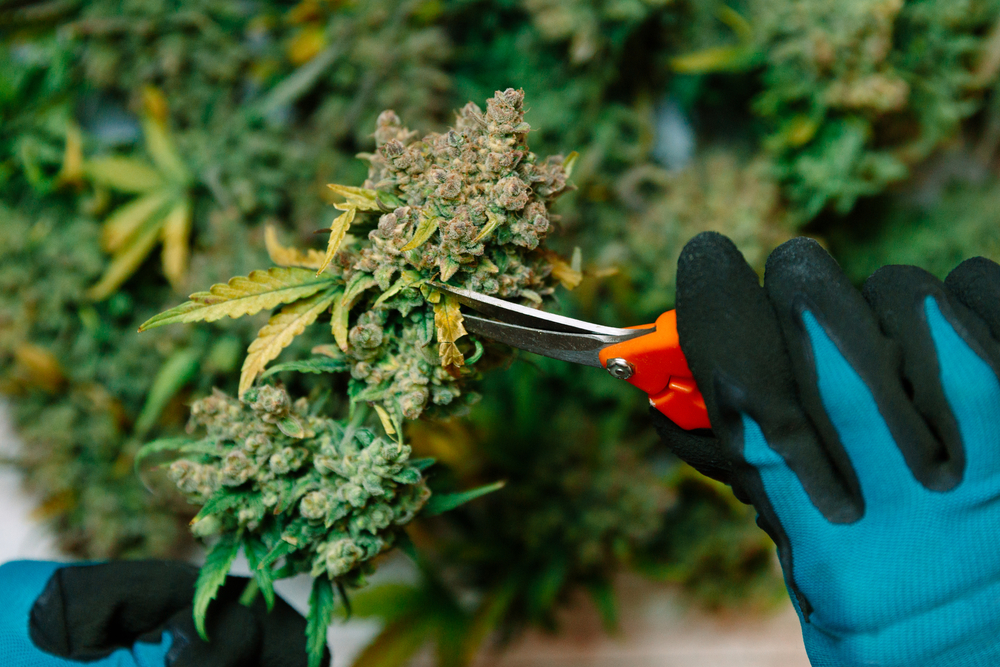
Adult-use or recreational cannabis was legalized in New Mexico. Effective June 29th, 2021, residents of the state will smoke or ingest cannabis without fear of legal reprisal. This is thanks to a significant shift in political leadership in New Mexico that added more progressive leaders to the conversation about legalization.
If you live in New Mexico, you will be able to smoke cannabis. The same caveats apply in other recreational states, not in public, not near minors or schools, or state or federal properties. Crossing the state line with cannabis purchased from another jurisdiction is still a felony offense. So, that places residents of New Mexico in a bit of a double-jeopardy.
Consuming cannabis will be legal in June, but the regulatory framework is still being drafted. New Mexico lawmakers will have to prepare and approve policies about business licensing and taxation. And that is going to take another year. Recreational dispensaries won’t be open to sell cannabis until 2022. So, legalizing home-grown cannabis is a good workaround. Until recreational dispensaries can open.
Commercial cannabis businesses serving the recreational market will not be able to register until January 1, 2022. Adult-use sales will not commence until April 1, 2022. The new law(s) make New Mexico the 17th state to legalize recreational marijuana.
In some states where medical marijuana is legalized, costs can range from several hundred to almost one thousand dollars per month for cannabis. When you consider that the majority of patients with health impairments are unable to work, and on social support, that cost is more than burdensome. It can exclude patients from exploring cannabis as alternative medicine.
Symptom management for chronic or terminal diseases can be costly. For patients that have health insurance, prescription drugs are covered, or at least, partially subsidized. This is true for patients receiving Medicare and Medicaid. But some patients that are ineligible for subsidized health care, who cannot afford good health insurance, are paying out of pocket for prescriptions.
For pain management, opioid medications are typically prescribed. However, the cost of those medications continues to rise. In response to the opioid epidemic and growing instances of overdose, prescriptions for NSAIDs and opioids have become harder to get for patients. And doctors are prescribing less of them.
Patients have two choices. They can either cope with inadequately managed health symptoms because they cannot afford pain medications. Or because opioids are no longer effective for managing pain and inflammation. Or they can explore other methods that can work. And that includes trying medical marijuana.
There are three main reasons why states with legalized medical cannabis programs are moving ahead with decriminalizing home-grown cannabis:

Patients with a medical card are not permitted to sell or distribute the cannabis they grow at home. All state legalized programs across the country that allow home-grow have set limits for the maximum number of plants that a patient can cultivate. The number of seedlings and mature plants is capped for each medical cardholder.
The average cost of a set-up for indoor growing can be about $500. Many patients prefer to cultivate indoors, in a garage, or shed with artificial lighting, in a place that can be secured to prevent theft or keep the plants safely away from teens and children.
Because cannabis plants can be ready in as little as sixty days (depending on the strain), the patient can grow cyclically. What they cultivate can be stored for personal use.
Drive around virtually any part of Oklahoma, and you will see at least two medical cannabis dispensaries. That is because the state of Oklahoma remains generous in terms of the number of business licenses it issues to cannabis cultivators and retailers.
But not every state is the same. While drafting the legislation for legalized medical marijuana, some states opted to severely restrict the number of business licenses they issued. Consequently, that creates problems for patients. If cultivators in any given state cannot keep up with demand, there can be shortages. Patients may not be able to buy the medical marijuana they need.
Transportation is another factor that limits patient accessibility. If there are few medical cannabis dispensaries, it may be a long drive to get to one. And that can be inconvenient or even impossible for some patients—particularly those who do not have their transportation.

Did you know that most patients who have a medical card use more than one strain of cannabis? Sativa dominant hybrids are generally more popular for daytime use. Sativa cannabis can help people feel happier and more energetic. Some Sativa strains can provide effective relief for mental health symptoms like stress, anxiety, or depression.
Indica strains are sedating. That means that they are not uplifting, energetic, or cerebral. Most Indica strains of cannabis provide relaxation; some can provide highly effective relief from pain and inflammation. But all pure Indica strains encourage sleep. And for patients that have moderate to severe pain and inflammation, it can help provide a deep, restorative sleep, where the patient is not woken up by discomfort throughout the night.
Patients authorized to use medical marijuana often prefer both Indica and Sativa strains that have a high cannabidiol content. Cannabidiol (CBD) has shown promise in many international clinical studies. Specifically, CBD may provide relief from mental health disorders such as anxiety, PTSD, and depression. But CBD has also been clinically studied as an effective supplement to help reduce inflammation and pain.
The Sativa or Indica strains that have the highest ratio of CBD are unsurprisingly more expensive. They are the top-selling and most coveted products at any medical marijuana dispensary. Like any other retail product, the more popular strains are always priced higher, sometimes out of the range of affordability for some patients. Those strains can now be grown at home.
Allowing residents to grow their cannabis is a stop-gap measure. New Mexico won’t have adult-use dispensaries licensed and ready for retail sales until April 2022. While residents are waiting for dispensaries to open, they can grow their weed at home.
Once the adult-use dispensaries are open, it is probable that the right to grow cannabis at home will remain. However, more restrictions on the number of seedlings and mature plants may be amended in the future.
Featured Image: zadirkin | Deposit Photos
No Information on MarijuanaDoctors.Com should be used to diagnose, treat, prevent or cure any disease or condition. You can view our Full Disclaimer here.